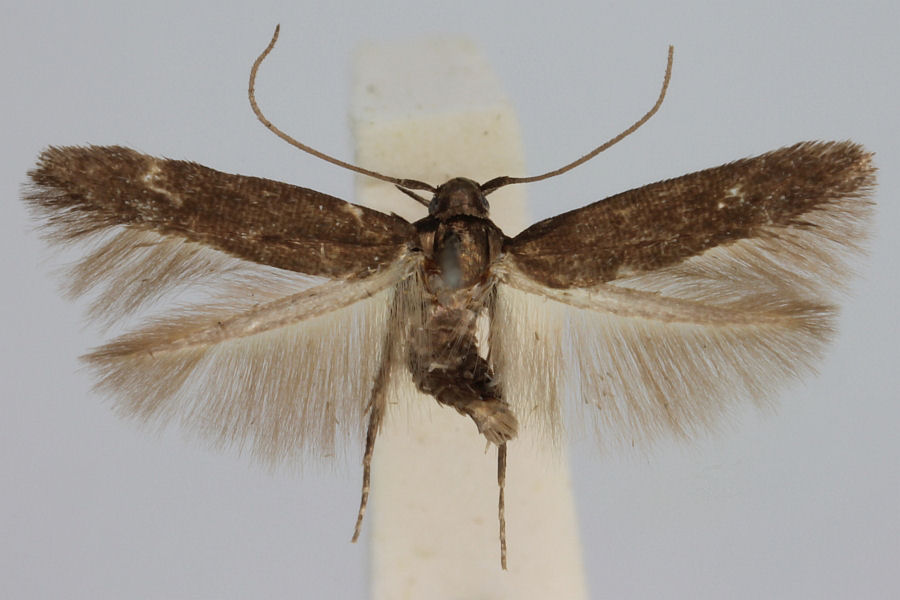Ascalenia vanella
Ascalenia Vanella is a butterfly (moth ) from the family of Chrysopeleiidae.
Features
The moths reach a wingspan 7-10 mm. Head, thorax and tegulae shining greyish brown, the tips of the scales are brighter here. The antennae are gray-brown. The forewings are mottled gray-brown and more or less with light gray at the top of the shed. These scales also form two very indistinct and irregular binding located at 1/ 3 and 2 /3 of the forewing length. The outer binding is slightly obliquely outwards. At 1/ 3 of the forewing length is on the anal fold a dark oval spot. A similar but smaller spot is located in the wing center at the inner edge of the outer binding. The fringe scales are gray-brown at the apex, they become the wings inside the edge pale. The hind wings shine light gray, they are more brownish on the Costa loader and at the apex. The abdomen shining gray-brown, its after clump is white.
In the male the uncus is rather short, narrow and bent downward. The Valven are slender and nearly parallel walls. They have a rounded apex. On the inner surface are rows of coarse bristles, hair -like bristles and a very long and curved bristle can be found in the basal half of the outer surface. The aedeagus is almost straight, tapering distally slightly.
In females, the slit-shaped bulge of the seventh sternite is small and narrow U-shaped. The fold of the sixth sternite is blunt triangular. The side shields are trapezoidal and sclerotized at the ostium. They have a net-shaped structure which is connected at both ends to a mesh-like patch on the inside of the fold at the rear edges. The ductus bursae is done in two turns and has a narrow sklerotisiertes longitudinal ligament. The corpus bursae is oval and has two large funnel-shaped signals with a curved tip.
The caterpillars are orange-yellow.
Similar Species
Ascalenia Vanella similar habitual Ascalenia vanelloides and Ascalenia echidnias, for secure species identification a genital examination is necessary.
Dissemination
Ascalenia Vanella is widespread in central and southern Europe. In addition, the species occurs also in the Canary Islands, Asia Minor and the Caucasus. She lives on the banks of large rivers.
Biology
The caterpillars develop on German tamarisk ( Myricaria germanica ) and at different Tamarix species. Drill in the seed capsules or in the branches. It makes two generations per year. The moths fly from June to July and from September to October. The second generation winter and flies again in early spring.
System
There are known the following synonyms:
- Laverna Vanella Frey, 1860
- Lauerna seeboldiella Ragonot, 1882







